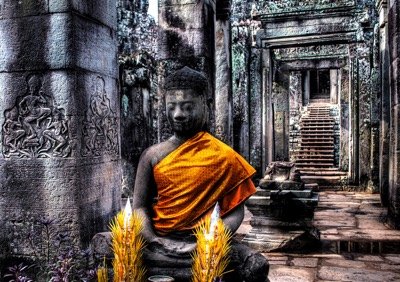Join Yogi Aaron on a Blue Osa Journey to Angkor Wat!
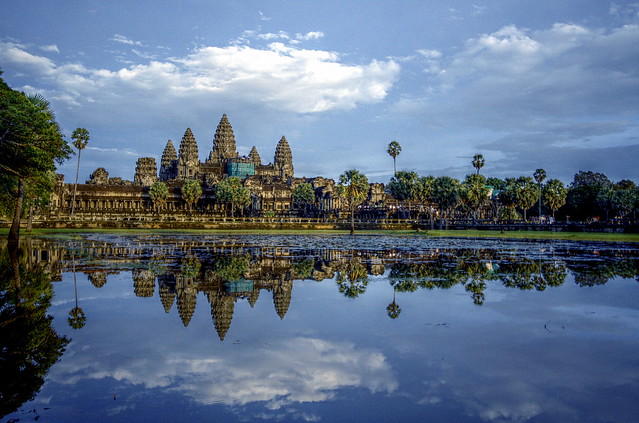
“Not all those who wander are lost,” the famed J.R.R. Tolkien once said.
It is with purpose that one seeks to know the world and understand its vast beauty and the simple life lessons within it.
In September, join Yogi Aaron on a journey of discovery and fulfillment to Angkor Wat, the world’s largest religious monument and an active Buddhist temple, nestled in the ancient rice fields of northeastern Cambodia.
With guiding principles such as mindfulness, presence, letting go of attachment, and kindness and compassion, Buddhism allows for a personal journey whether at home or abroad. But given the opportunity, why not allow self-discovery to unfold in a holy place with centuries of history?
Why A Blue Osa Journey to Cambodia?
Yogi Aaron chose Angkor Wat for its spiritual and historical significance. It has been a gathering place of peace for almost one thousand years. The ruins of Angkor, once the world’s largest city, lie strewn about sprawling rice patties, their ancient architecture glistening in the reflection of the still waters at their base. Among these ruins, lies Angkor Wat. It was originally constructed by the Khmer Empire as a Hindu temple in the 12th century, but by the 13th century had transitioned into a Buddhist temple that remains active to this day. Known for its classical Khmer architecture this massive temple displays an incredible amount of bas-reliefs for its time and a plethora of devatas, or inlaid reliefs of Hindu gods.
But what’s most interesting about Angkor Wat is the design by which it was laid out. During that time “temple-mountain” was a common theme in Khmer architecture. Influenced by Indian temple architecture, “temple-mountain” is a structural representation of Mount Meru, a holy mountain in Hindu lore with five peaks that house all the Hindu gods, or devas. In Hinduism, Mount Meru is the place where the physical, metaphysical, and spiritual universes coalesce. Angkor Wat has five towers in the center that represent Mount Meru. An outer wall that symbolizes the mountains enclosing the world then surrounds these towers, and finally a moat encapsulates the temple grounds, representing the oceans beyond this Hindu mega-universe. It’s no surprise that Angkor Wat has been dubbed “The Kingdom of Wonders.”
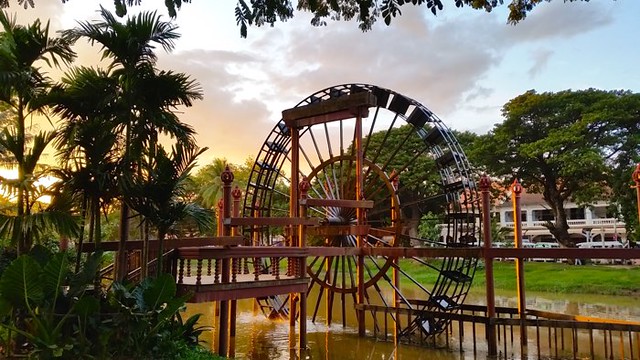
The Spiritual Significance of Angkor Wat
Beyond rich history, Angkor Wat offers an opportunity to connect with a deeper spiritual realm largely inaccessible in the modernity of the Western world.
On this Blue Osa journey, you will stay at the Rambutan Resort in the city of Siem Reap, a mere twenty minutes from the temple. The retreat will begin with a dinner where you will join in fellowship with the rest of your group. Each morning will begin with a yoga practice led by Yogi Aaron followed by a delicious and healthy breakfast and after a day of discovery, you’ll come together with your group for a delicious, hearty dinner. Along with Angkor Wat, Yogi Aaron will guide you through other nearby, once-in-a-lifetime spiritual experiences.
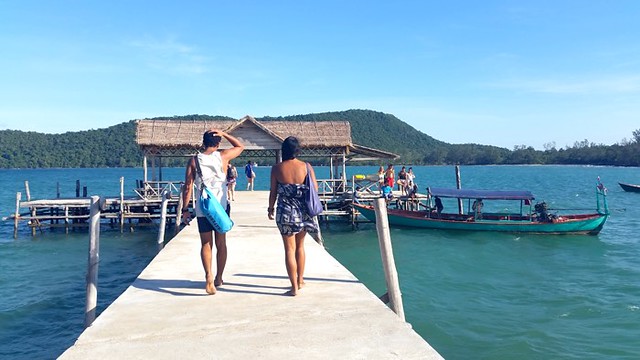
Cultural Attractions On Our Yoga Retreat To Cambodia
You will visit the floating villages around Siem Reap, located in the Tonle Sap Lake, known for its unique ecosystem—a spiritual act of nature. The true beauty happens annually with the Tonl Sap River that flows south, connecting the lake to the famous Mekong River. During the wet season the Mekong River will expand so much that it pushes water back into the connecting river, reversing its flow and sending the water northwards, causing the lake to swell and become one of the largest freshwater lakes in Asia. Because of this ecological phenomenon, the Tonl Sap Lake, also known as the Great Lake of Cambodia, was nominated as a UNESCO biosphere reserve. The floating villages that reside on this lake have sculpted an equally unique way of life to mirror the climate in which they live. Experiencing a way of life so vastly different from your own allows you the perspective to distance yourself and reevaluate your priorities, centering you spiritually in a way that the western world can only hint at.
But floating villages aren’t the only dose of culture on this journey, you’ll also be led on a guided tour of Kulen Mountain, the birthplace of the Khmer Empire and to this day considered to be a sacred mountain by the Khmer people, the predominant ethnic group in Cambodia. Located about 50km (30 miles) outside of Siem Reap, you’ll get a taste of the Cambodian country-side, driving through rice paddies and small villages on the way to the mountain. Kulen Mountain is home to an ancient hilltop village and two beautiful waterfalls, whose water is oftentimes bottled by the Khmers who deem it holy water. This same water flows down the mountain eventually converging in the Tonl Sap Lake. Having this knowledge of the interconnectivity of your myriad experiences on this journey will only help to foster your own personal growth and acceptance of the interconnectivity of us all.
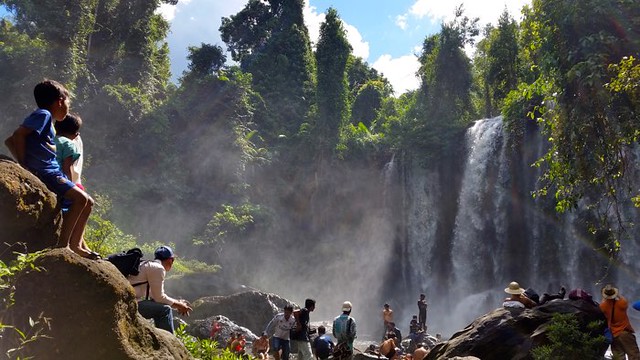
This Blue Osa Journey will take you to many exotic and foreign places. It will center you with a daily practice that roots you within yourself and connects you to those around you, but most importantly it will open your soul to the boundless possibilities that exist within your own vast, ever-growing and ever-changing life. As you seek experiences that place you outside of your every day life, you will discover yourself through perspectives that were once obscured by your day-to-day reality.
Donna Fahri, the famed yoga guru, reminds us, “Yoga does not remove us from the reality or responsibilities of everyday life but rather places our feet firmly and resolutely in the practical ground of experience. We don’t transcend our lives; we return to the life we left behind in the hopes of something better.”
It is in the return that you will find the daily practice from this journey to ground you. You will use the experiences from this small slice of another world’s life, to help build and shape your own. Blue Osa invites you to take the first step toward the rest of your life.
Pin this post for later!

About The Author
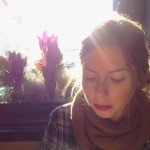
ABBY RONNER is a photographer and writer living in Brooklyn. She is a contributing writer for Narratively and VICE’s The Creators Project and her photography has been exhibited in group shows and juried exhibitions in NYC and DC. She has a hound dog named Daisy and spends her days knee-deep in folklore as a Gallery Director at City Lore in NYC. You can see more of her work on her website at abbyronner.com.
Photo via Christopher Haag


